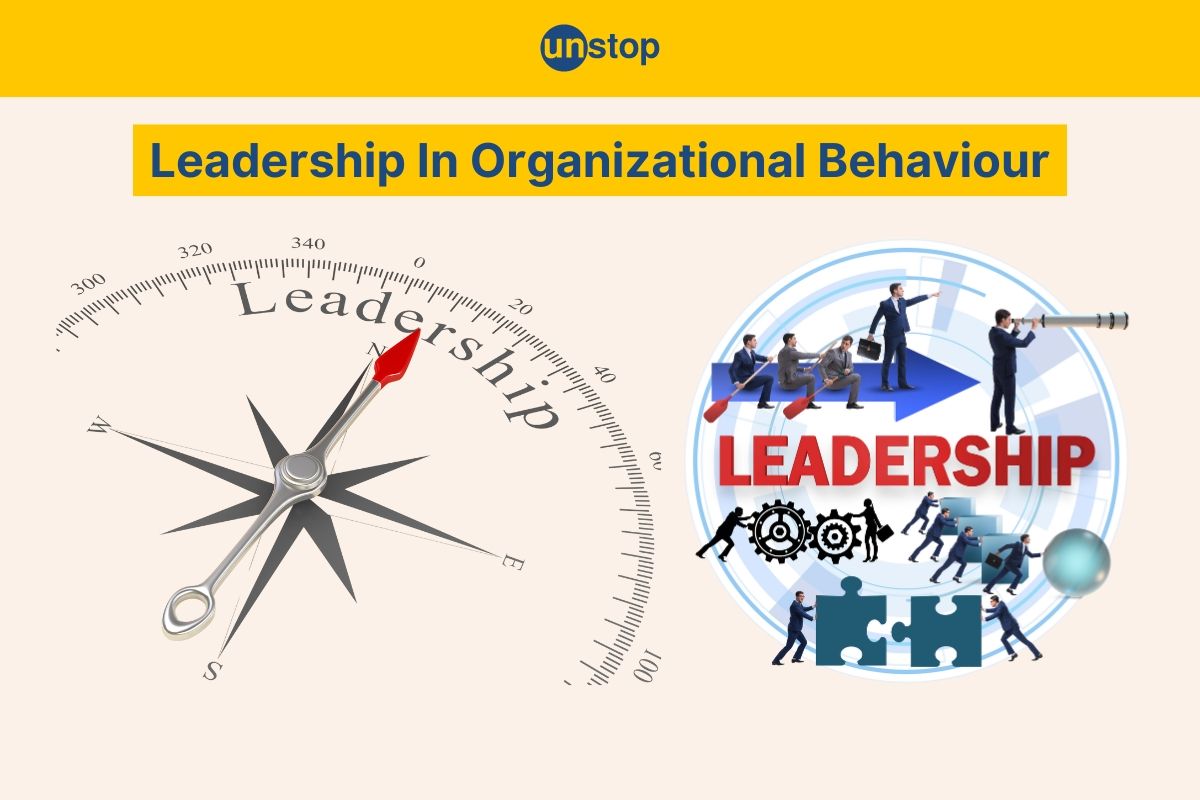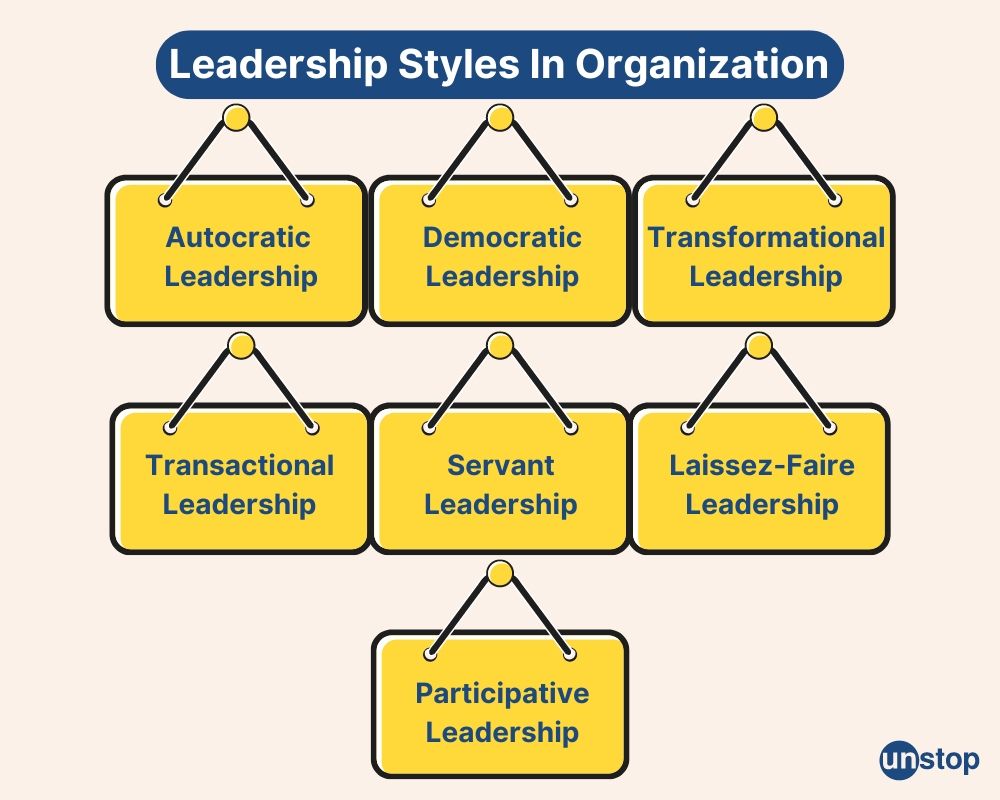- Definition Of Leadership
- Leadership Styles In Organizational Behaviour
- Core Features of Leadership
- Importance of Leadership
- Key Qualities Of An Effective Leader
- Leadership Traits And Behaviors
- Leadership Challenges
- Impact Of Leadership On Organization
- Conclusion
- Frequently Asked Questions (FAQs)
Leadership: Definition, Styles, Features, Importance & Qualities

Leadership is the backbone of any successful organization. It’s about more than just giving orders; it’s the ability to inspire, influence, and guide others toward achieving common goals. Whether in business, government, or community groups, leadership plays a vital role in determining the direction and success of any initiative.
Definition Of Leadership
Leadership is the capacity or ability to guide, inspire, and influence individuals or groups toward achieving a common goal. It involves decision-making, communication, and motivation while fostering collaboration and accountability.
Leadership Styles In Organizational Behaviour
Different leadership styles can impact organizational behaviour and outcomes. Some common leadership styles include:

Autocratic Leadership
In this leadership approach, the leader makes decisions centrally without much input from team members. It can work well during emergencies but might result in reduced employee morale and creativity.
Democratic Leadership
In this style, leaders involve employees in decision-making processes and encourage participation. It promotes teamwork, innovation, and employee empowerment.
Transformational Leadership
Transformational leaders inspire and motivate employees by setting a compelling vision, fostering creativity, and empowering others to achieve their full potential. They lead by example and create a positive organizational culture.
Transactional Leadership
Transactional leaders focus on setting clear expectations, establishing rewards and consequences, and monitoring performance. They motivate employees through contingent rewards and corrective actions.
Servant Leadership
Servant leaders put their team members' needs first, helping them grow and improve. They prioritize serving others over asserting power and building trust and commitment within the team.
Laissez-Faire Leadership
In the laissez-faire leadership style, leaders provide little supervision and trust team members to make decisions independently. This method encourages employees to take charge and be responsible for their work.
Participative Leadership
Participative leadership values team members' input and collaboration in decision-making processes. While the leader considers team feedback, the final decisions ultimately rest with them, striking a balance between employee involvement and decisive leadership.
Core Features of Leadership
Let us study some of the core features seen in an effective leader:
- Influencing Others' Behavior
At its essence, leadership is about influencing others to align their actions with a collective goal. A leader motivates and guides their team, ensuring everyone works together towards a unified vision. - Interpersonal Process
Leadership is an ongoing relationship between leaders and followers. The success of this dynamic determines how efficiently and effectively goals are achieved. - Attaining Organizational Goals
A leader unites the team and focuses their efforts on achieving common organizational goals. With the right direction, teams can work cohesively and effectively. - Continuous Process
Leadership is not a one-time act but a continuous effort. A leader must consistently guide their team, making sure efforts stay aligned and productive. - Group Interaction
Leadership requires a group to function. A leader can only lead when others are willing to follow, and teamwork is essential for success. - Adaptability to Situations
Effective leadership depends on the context. No one leadership style fits all situations, so it’s important for leaders to assess and adapt based on circumstances.
Importance of Leadership
Let's also study the importance of leadership in an organization:
- Initiating Action: Leadership is the catalyst for action. From the outset, a leader communicates the plan, sets expectations, and motivates the team to take the first step toward achieving goals.
- Providing Motivation: Leaders motivate their employees to drive performance. They offer financial and non-financial incentives to keep the team engaged and committed.
- Offering Guidance: Leadership is about more than supervision; it’s about mentorship. A leader guides their team, offering direction and advice to ensure tasks are completed effectively.
- Creating Confidence: A good leader fosters an environment of trust and security. By resolving conflicts and providing clarity, they build confidence among employees and ensure they feel valued and supported.
- Building a Positive Work Environment: Leaders cultivate an atmosphere where employees feel heard and respected. A positive work environment helps foster collaboration and supports the organization's long-term stability.
- Ensuring Coordination: Effective leaders reconcile individual interests with organizational goals, ensuring smooth coordination and alignment within teams.
- Creating Future Leaders: A great leader not only leads but also mentors others to become future leaders, ensuring the sustainability of leadership within the organization.
- Inducing Change: Leaders are the change-makers. They inspire teams to embrace change, helping employees navigate transitions without resistance and fostering adaptability.
Key Qualities Of An Effective Leader
Listed below are some of the key qualities of an effective leader:
- Personality: A leader’s personality should inspire confidence. They should be approachable yet authoritative, balancing being liked and respected.
- Knowledge and Competence: Leaders must be knowledgeable in their field. Their expertise is key to making informed decisions and effectively guiding their teams.
- Integrity: Integrity is the foundation of leadership. A leader must be honest, objective, and fair, making decisions based on facts and principles.
- Initiative: A good leader is proactive. Rather than waiting for opportunities, they take the initiative to find and capitalize on them.
- Communication Skills: Effective communication is crucial for a leader. This includes not only speaking clearly but also being a good listener and counselor.
- Motivation Skills: An effective leader understands what drives their team and uses this insight to inspire and motivate them to perform at their best.
- Self-Confidence: Leaders must have confidence in their decisions and abilities. Their belief in themselves instills trust and confidence in their followers.
- Intelligence and Vision: A leader needs to analyze situations intelligently and foresee potential outcomes. A strong leader should also have a clear vision for the future.
- Decisiveness: Leaders must make decisions quickly and with confidence. Indecision can cause delays and uncertainty within the team.
Leadership Traits And Behaviors
Leaders exhibit various traits and behaviors that influence their effectiveness. Some common leadership traits include:
-
Integrity: Leaders with integrity demonstrate honesty, ethics, and consistency in their actions, earning trust and respect from others.
-
Emotional Intelligence: Leaders who possess strong emotional intelligence are adept at recognizing and regulating their own emotions as well as the emotions of their team members, which helps cultivate positive connections and enhance communication effectiveness.
-
Visionary Thinking: Good leaders set a clear direction for the organization and motivate their team to achieve it.
-
Adaptability: Leaders must be adaptable and flexible in responding to changing circumstances and environments.
-
Communication: Effective communication is crucial in leadership, helping to share thoughts, inspire team members, and address disagreements for positive outcomes.
Leadership Challenges
Leadership in organizational behaviour also comes with its challenges, including:
-
Managing Change: Leaders must navigate and lead organizational change effectively, overcoming resistance and ensuring smooth transitions.
-
Conflict Resolution: Addressing conflicts and disagreements among team members requires strong interpersonal skills and the ability to facilitate productive discussions.
-
Maintaining Morale: Leaders need to inspire and motivate employees, especially during challenging times, to maintain high morale and engagement.
-
Crisis Management: Leaders must be prepared to handle crises and emergencies, make swift decisions, and communicate effectively to minimize negative impacts.
Impact Of Leadership On Organization
Let us study the impact of leadership on organizational behaviour:
Employee Performance
Effective leadership behaviour is essential for influencing how employees behave and perform in a company. Clear communication, support, and realistic goal-setting by leaders inspire employees to give their best effort, leading to increased productivity and efficiency overall.
Good leaders know it's important to appreciate and reward their team's hard work. Recognizing accomplishments and giving helpful feedback creates a positive atmosphere for growth. This boosts morale and motivates employees to excel in their jobs.
Organizational Culture
Strong and effective leadership has the power to significantly influence organizational culture in a positive manner. Leaders who demonstrate integrity, transparency, and empathy set the tone for a culture of trust and collaboration.
Employees who are valued, respected, and listened to by their leaders tend to be more engaged and dedicated to achieving the organization's objectives.
Good leaders help teams be more creative by encouraging them to share ideas and communicate openly. This can lead to better solutions, increased efficiency, and a stronger position in the market.
Conclusion
In conclusion, leadership in organizational behaviour is a complex and dynamic process that involves influencing, guiding, and empowering individuals to achieve common goals. Effective leadership requires a combination of traits, behaviours, and strategies tailored to the organization's culture, goals, and challenges.
By embodying essential qualities like integrity, communication, and decisiveness, leaders can ensure their team remains focused, engaged, and productive. Ultimately, effective leadership drives success and shapes the future of an organization.
Frequently Asked Questions (FAQs)
1. What is the significance of understanding leadership in organizational behaviour?
Understanding leadership in organizational behaviour helps companies cultivate effective leaders, improve communication, and enhance employee engagement.
2. How does leadership differ from management?
Leadership focuses on inspiring and motivating individuals towards a common goal, while management involves planning, organizing, and controlling resources to achieve objectives. Leaders innovate and guide, whereas managers administer and maintain.
3. What are some common leadership styles used in organizations?
Common leadership styles include autocratic, democratic, transformational, transactional, and laissez-faire.
4. How does effective leadership impact organizational behaviour?
Good leadership can boost employee morale, productivity, job satisfaction, and performance. It creates a positive atmosphere at work, promotes creativity, establishes trust among colleagues, and improves teamwork in the company.
5. What strategies can organizations employ to develop high-performance teams?
Organizations can develop high-performance teams by fostering open communication, providing continuous training and development opportunities, setting clear goals with measurable outcomes, promoting teamwork and collaboration, recognizing individual contributions, and creating a supportive work culture that values diversity and inclusion.
Suggested reads:
- Perception In Organizational Behaviour- Meaning, Process & Factor
- Motivation In Organizational Behaviour: Definition, Type & Theory
- Theory X And Theory Y | Decoding McGregor's Theory Of Motivation
- Groups In Organization: Definition, Types & Advantages Explained
- Personality In Organizational Behaviour- Types, Theories And More
Instinctively, I fall for nature, music, humor, reading, writing, listening, traveling, observing, learning, unlearning, friendship, exercise, etc., all these from the cradle to the grave- that's ME! It's my irrefutable belief in the uniqueness of all. I'll vehemently defend your right to be your best while I expect the same from you!
Login to continue reading
And access exclusive content, personalized recommendations, and career-boosting opportunities.
Subscribe
to our newsletter
















Comments
Add comment